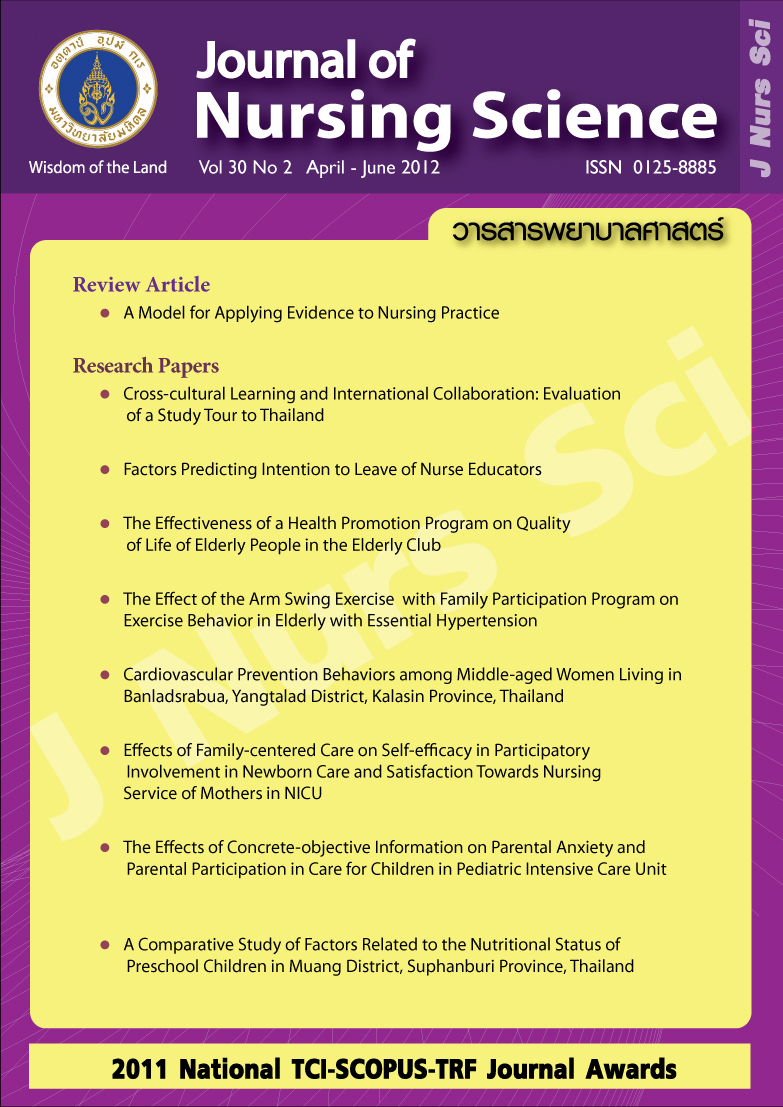The Effectiveness of a Health Promotion Program on Quality of Life of Elderly People in the Elderly Club
Main Article Content
บทคัดย่อ
Purpose: This study examined the effects of a Health Promotion Program on quality of life of elderly people in the elderly club.
Design: Quasi-experimental research, one-group pretest-posttest design.
Methods: The participants included 43 elders who had been regularly participating in the elderly club of Trok Khao Mao. Data were collected by using an interviewing questionnaire asking demographic characteristics, perceived health status, health behaviors, and lifestyles, and a questionnaire of elderly’s quality of life. A Health Promotion Program was developed by applying self-efficacy theory and integrating four domains of quality of life (physical, mental, social, environment). In this program, the participants involved in the activities related to health education, group counseling, discussion, demonstration and practice. The program was carried out for 2 months, and then evaluated for outcomes. Data were analyzed using descriptive statistics, paired t-test and chi-square test.
Main findings: The total scores of quality of life of the participants before and after participating in this program were not significantly different except physical aspect of quality of life (p < .05). In addition, the participants perceived that their health status after the program was significantly better than prior to the program (p < .05). Most participants (83.33 %) reported that the program was very satisfactory.
Conclusion and recommendation: A Health Promotion Program is extremely important for the
elderly to modify their health behaviors. The necessity to continue this program is evident to sustain good quality of life for elderly people in the elderly club.
Article Details
ลิขสิทธิ์: วารสารพยาบาลศาสตร์เป็นเจ้าของลิขสิทธิ์ในการเผยแพร่ผลงานที่ตีพิมพ์ ห้ามผู้ใดนำบทความที่ได้รับการตีพิมพ์ในวารสารพยาบาลศาสตร์ไปเผยแพร่ในลักษณะต่างๆ ดังต่อไปนี้ การส่งบทความไปตีพิมพ์เผยแพร่ที่อื่น การนำบทความเผยแพร่ออนไลน์ การถ่ายเอกสารบทความเพื่อกิจกรรมที่ไม่ใช่การเรียนการสอน ยกเว้นเสียแต่ได้รับอนุญาตจากวารสารพยาบาลศาสตร์

Disclaimer: เนื้อหาบทความหรือข้อคิดเห็นใดๆ ในวารสารพยาบาลศาสตร์ ถือเป็นความรับผิดชอบของผู้เขียน กองบรรณาธิการไม่จำเป็นต้องเห็นด้วยและไม่มีส่วนรับผิดชอบแต่อย่างใด


